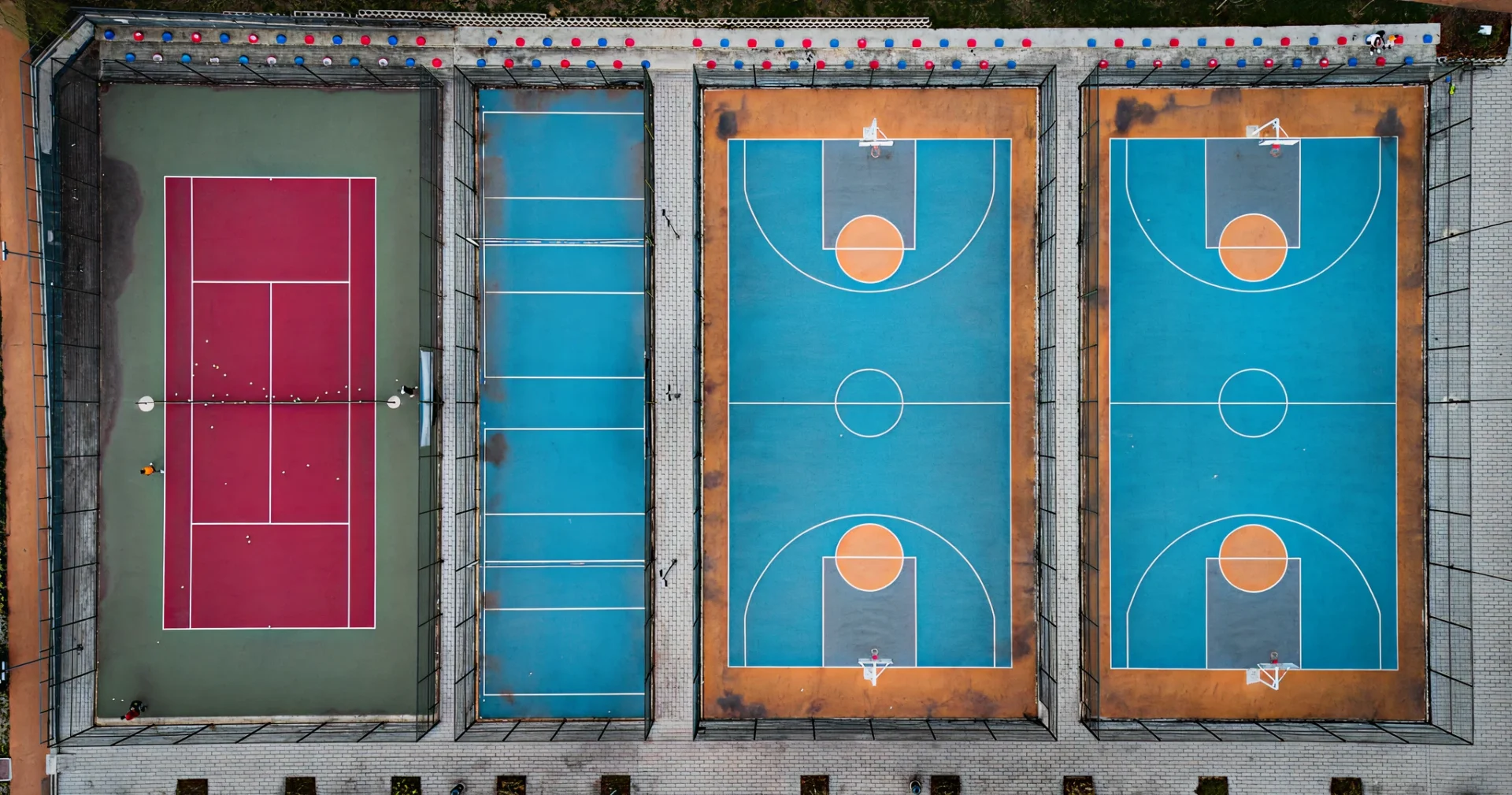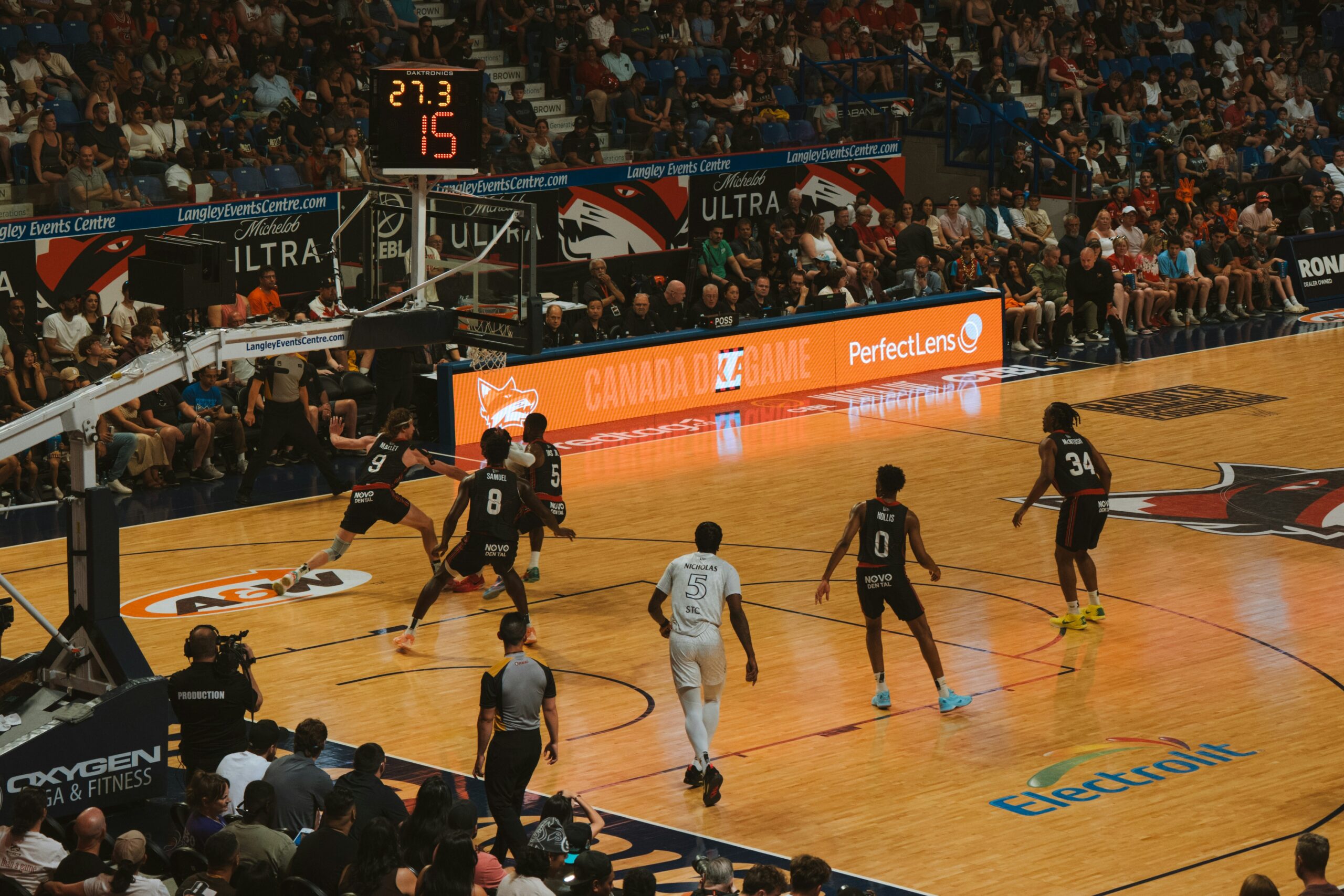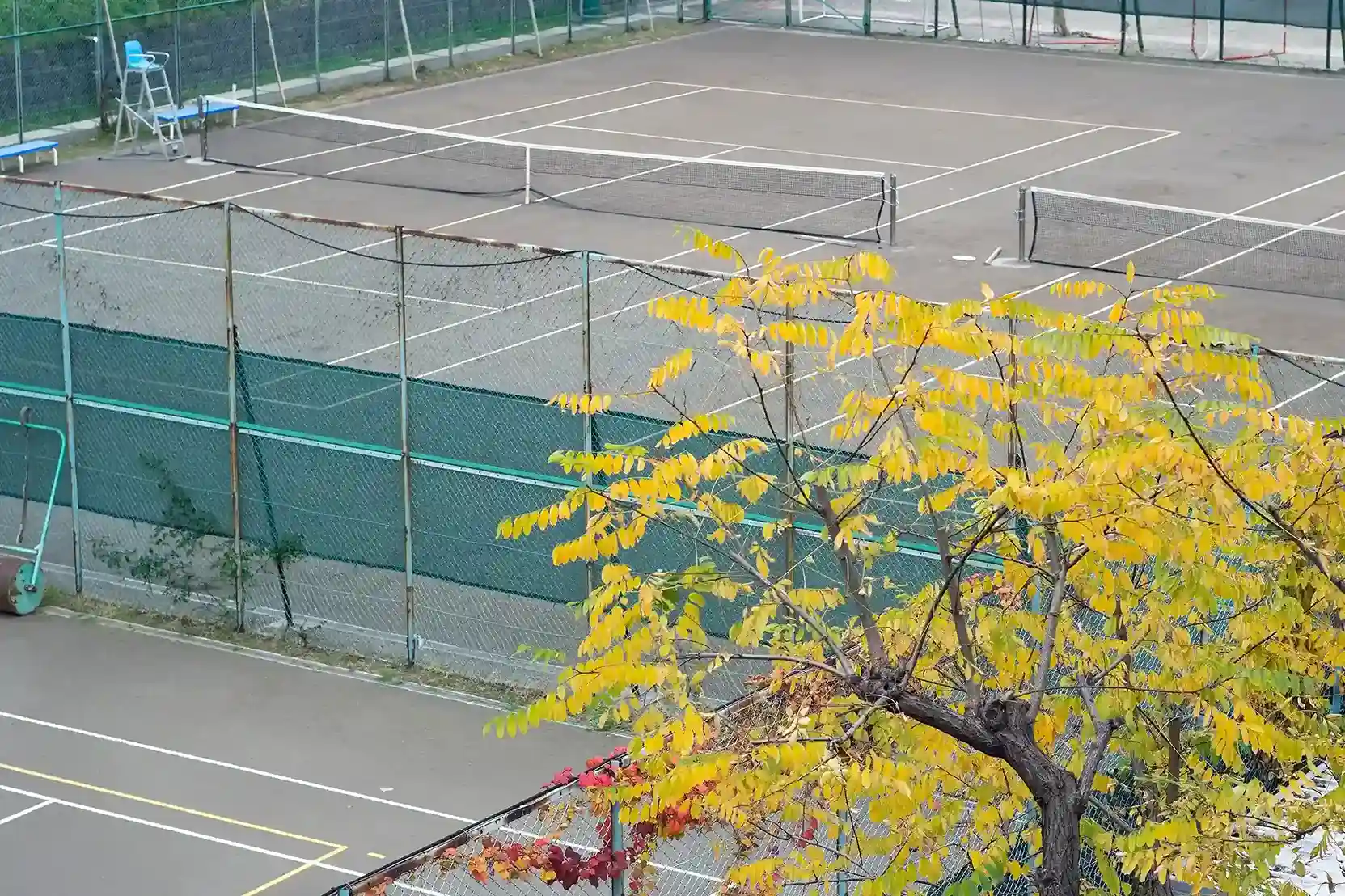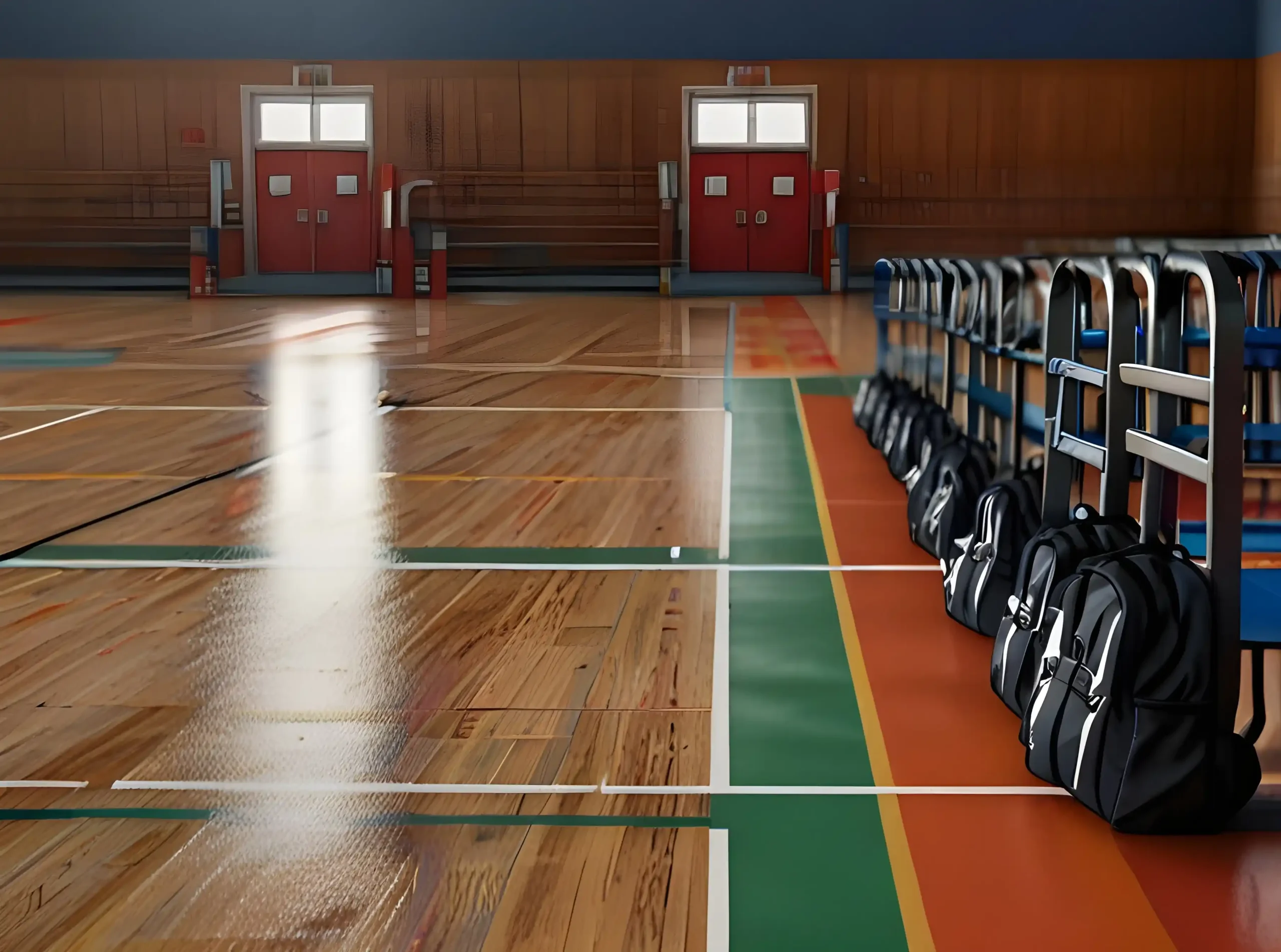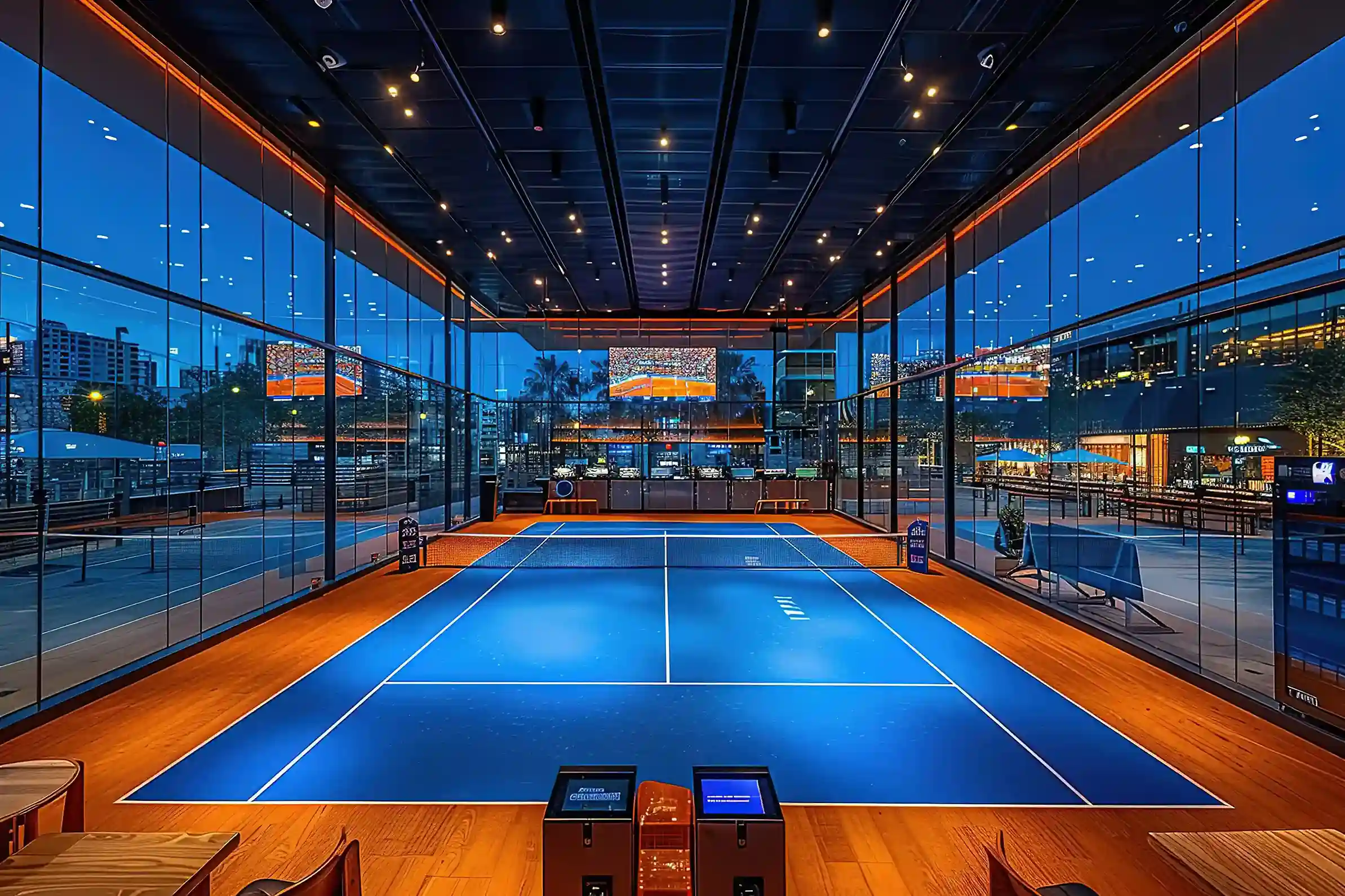Understanding the distinctions between high school and college basketball court dimensions is critical for athletic directors, facility managers, and anyone involved in sports facility operations. These differences not only impact the game’s flow but also affect player performance and strategy. Whether you’re considering court upgrades, reconfigurations, or new installations, knowing these dimensions is essential for compliance and optimal gameplay.
This blog will compare the dimensions of high school and college basketball courts, highlight key differences, and explore how these variances influence the game. Additionally, we’ll showcase why selecting the right flooring, such as VMKON’s high-performance sport flooring solutions, ensures your facility is equipped for professional-level play.
High School Basketball Court Dimensions
High school basketball courts adhere to specific measurements outlined by the National Federation of State High School Associations (NFHS). While slightly smaller than college courts, these dimensions are standardized to promote uniformity across high school sports facilities.
- Court Size: High school courts are 84 feet long and 50 feet wide.
- Free-Throw Line Distance: The free-throw line is positioned 15 feet from the backboard.
- 3-Point Line:
- The 3-point arc extends 19 feet 9 inches from the center of the basket.
- The Key (Paint):
- The key (free-throw lane) measures 12 feet wide.
- Basket Height:
- The hoop is positioned 10 feet above the ground, which remains consistent across all levels of play.
These dimensions provide a playing surface that balances player development with game flow suited to high school athletes. High-quality hardwood flooring, such as VMKON’s sport flooring solutions, is essential for ensuring consistent ball bounce and player safety.
College Basketball Court Dimensions
At the collegiate level, the court size and markings slightly differ, reflecting a more advanced level of play. These specifications align with NCAA guidelines, ensuring consistent standards across college arenas.
- Court Size: College basketball courts are slightly larger at 94 feet long and 50 feet wide.
- Free-Throw Line Distance: The free-throw line remains the same as in high school, at 15 feet from the backboard.
- 3-Point Line:
- The 3-point arc extends farther out at 22 feet 1¾ inches from the center of the basket.
- The Key (Paint):
- The key in college basketball measures 12 feet wide, similar to high school dimensions. However, the restricted area arc (a four-foot arc under the basket) is unique to the college game.
- Basket Height:
- Like in high school, the hoop is positioned at a standard 10 feet.
For college-level games, court surfaces often require enhanced durability, premium shock absorption, and high-performance finishes to withstand intense gameplay. VMKON’s hardwood sport flooring systems are engineered to meet these high standards.
Key Differences Between High School and College Courts
The differences between high school and college basketball courts can seem slight but are significant when considering their influence on the game.
- Court Size:
- College courts are 10 feet longer than high school courts, providing a greater challenge and testing players’ stamina.
- 3-Point Line:
- The extended 3-point line in college games alters shooting strategy and requires more precision.
- Restricted Area Arc:
- This feature is unique to college basketball and impacts defensive plays around the basket.
These differences reflect the growing physical and strategic demands placed on players as they transition from high school to college level. Courts must be tailored to these requirements for optimal play.
How Differences in Court Dimensions Impact Gameplay
Court dimensions aren’t just lines on a surface; they play a significant role in shaping the game. Here’s how:
- Game Speed and Strategy:
- The larger court size in college increases the playing area, encouraging faster-paced gameplay and demanding better conditioning.
- Shooting Precision:
- The longer 3-point line in college basketball demands more power and accuracy, often redefining offensive plays.
- Defensive Strategy:
- The restricted area arc influences how players position themselves defensively under the basket, reducing the likelihood of drawing offensive fouls.
- Player Development:
- Transitioning from high school to college courts prepares players for higher competition levels and enhances their overall skills.
Facility managers and athletic directors face the challenge of ensuring courts meet the necessary standards while delivering a superior player experience. Using industry-grade court flooring like VMKON’s ensures performance and safety align with these evolving demands.
Why Court Flooring Matters
No matter the level of play, the quality of the court flooring significantly impacts the game. High-performing materials ensure a safe, durable, and professional-grade playing surface.
VMKON’s biomass sport flooring and hardwood sport flooring offer unmatched benefits:
- Durability:
- Our hardwood sport flooring is designed to withstand intense usage and resist wear over time.
- Player Safety:
- Floors with superior shock absorption reduce the risk of injuries during games.
- Performance Enhancement:
- Consistent ball bounce and traction provide an optimal playing experience for athletes.
- Eco-Friendly:
- Biomass sport flooring ensures sustainable choices for environmentally conscious facilities.
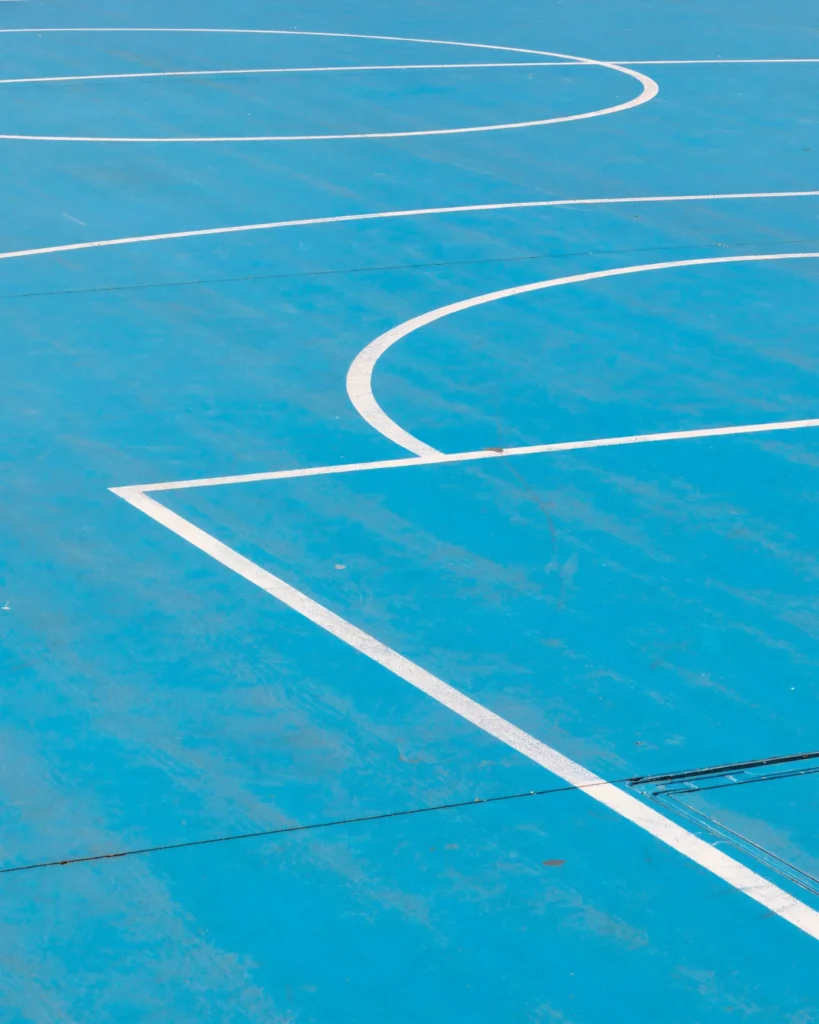

Equip Your Facility for Success
Whether you’re accommodating high school or college-level games, understanding basketball court dimensions and their impact on play is crucial. Properly sized courts and high-quality flooring enhance player performance, improve safety, and prepare athletes for every level.
At VMKON, we specialize in tailored court solutions to meet the demands of both high school and college basketball courts. From consultation to installation, our expert services ensure your facility is equipped for success.
Contact us today to learn how VMKON can help you design and install the ideal basketball court for your institution.

